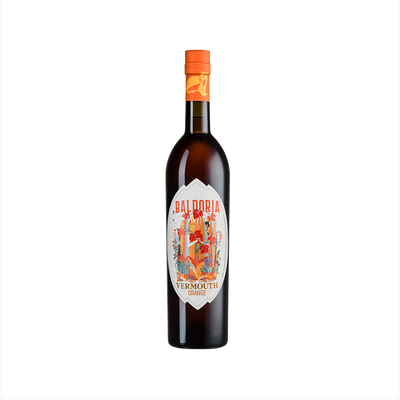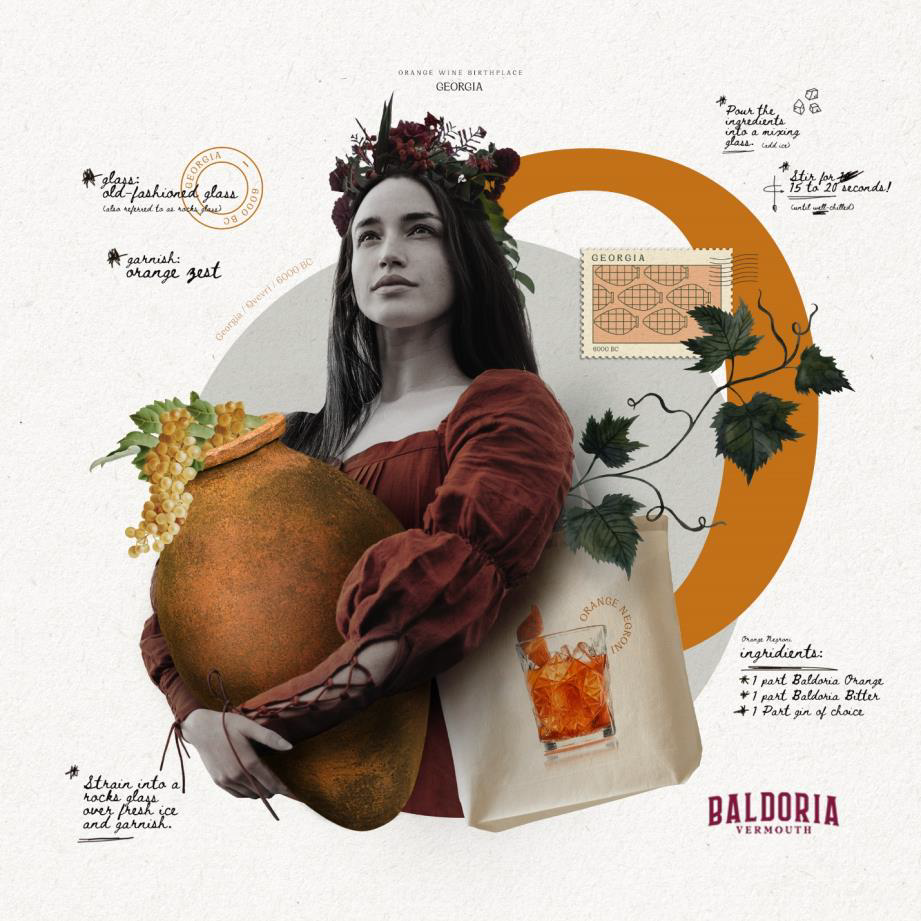Orange Wine
What is Orange Wine?
Orange wine represents a fascinating category of vermouth that gets its distinctive amber hue and complex flavor profile from extended contact with orange peels during maceration. This fortified wine style combines the botanical complexity traditional to vermouth with the bright, citrusy oils and bitter compounds found in orange zest, creating a spirit that bridges the gap between aperitif and digestif. What defines orange wine is this intentional infusion process, where the orange peel's essential oils and tannins integrate with the base wine, resulting in a beautifully balanced drink with notes ranging from sweet orange blossom to pleasantly bitter pith.
Learn More About Orange Wine
What makes Orange Wine unique?
Orange wine stands apart from traditional vermouths because it's actually not a vermouth at all—it's a white wine made with extended skin contact that gives it an amber or orange hue and tannic structure similar to red wines. While vermouths are fortified wines infused with botanicals and herbs, orange wines rely purely on their grape skins for complexity, developing earthy, funky flavors and a grippy mouthfeel that's completely different from vermouth's herbal sweetness. This ancient winemaking technique creates a category all its own, bridging the gap between white and red wines without any of the botanical additions that define vermouth styles.
How is Orange Wine made?
Orange wine gets its distinctive color and character from extended skin contact during fermentation, where white grape juice stays in touch with the skins for days, weeks, or even months—much like red wine production. The grape skins impart tannins, deeper flavors, and that beautiful amber-to-orange hue that gives this style its name. Most producers use minimal intervention techniques, often fermenting in clay vessels or neutral containers to let the grape's natural character shine through.
How do you drink Orange Wine?
Orange wine is typically enjoyed neat at cellar temperature (around 55-60°F) to showcase its complex flavors and unique texture, much like you'd savor a fine white wine. While it's not commonly used in cocktails due to its distinctive character and higher price point, adventurous bartenders occasionally incorporate it into wine-based aperitifs or natural wine cocktails that highlight its funky, earthy qualities. Orange wines shine brightest during autumn gatherings, natural wine tastings, and intimate dinner parties where their bold personality can take center stage alongside equally adventurous cuisine.
How do I choose a good Orange Wine?
Start by considering the style you want - lighter, crisp orange wines from Pinot Grigio or Riesling work beautifully in citrus-forward cocktails and spritzes, while fuller-bodied versions made from Gewürztraminer or Georgian varieties like Rkatsiteli bring enough weight to stand up to spirit-forward drinks. Look for producers who specialize in skin-contact wines rather than wineries just experimenting with the technique, and don't be afraid to ask your wine shop for guidance since orange wine quality varies dramatically. If you're planning to mix cocktails, choose bottles with good acidity and moderate tannins - they'll provide structure without overwhelming delicate ingredients like elderflower or herbs.
Nutritional Information
Typical Calorie Range per Ounce: 24-26 calories
Typical Carbohydrate Range per Ounce: 0.6-1.2 grams
Typical Sugar Range per Ounce: 0.2-0.8 grams
Typically Gluten Free: Yes
Orange wine shares similar nutritional characteristics with other white wines, since it's made from white grape varieties using extended skin contact techniques. The calorie content comes primarily from alcohol, while the carbohydrate and sugar levels depend on how dry or sweet the finished wine is. Most orange wines tend toward the drier side, keeping sugar content relatively low.
While wine is naturally gluten-free since it's made from grapes, always check the specific product label and producer information to confirm gluten-free status, especially if you have celiac disease or severe gluten sensitivity. Some winemaking processes or additives could potentially introduce gluten cross-contamination.
Scrolled this far? Your reward? Orange Wine Trivia!
- Orange wine gets its amber hue not from oranges, but from leaving white grape skins in contact with the juice during fermentation - a technique that's actually 8,000 years old and predates red winemaking. Georgia's ancient qvevri clay vessels still produce these "amber" wines exactly as they did when wine was first invented.
- Slovenia's Friuli region accidentally sparked the modern orange wine craze in the 1990s when winemaker Josko Gravner got tired of making "boring" white wines and decided to experiment with his grandfather's forgotten techniques. His rebel move inspired natural wine bars from Brooklyn to Tokyo.
- Orange wines contain up to 10 times more antioxidants than regular white wines because the extended skin contact extracts tannins and phenolic compounds normally found only in reds. You're basically drinking liquid skincare with your Pinot Grigio.
- The funky, sometimes barnyard-like flavors in orange wine often come from wild yeasts and bacteria that naturally live on grape skins - the same microbes that give aged cheese and sourdough bread their complex flavors. It's fermentation's greatest hits album in a glass.
- Orange wine pairs brilliantly with Korean kimchi, Indian curry, and Ethiopian injera because its tannins and acidity can handle spicy, fermented, and umami-rich foods that would overwhelm traditional white wines. It's the secret weapon sommelier use for "impossible" food pairings.
Higher-proof spirits can be intense. Mix carefully, taste thoughtfully, and enjoy responsibly.
Gift message (optional)


